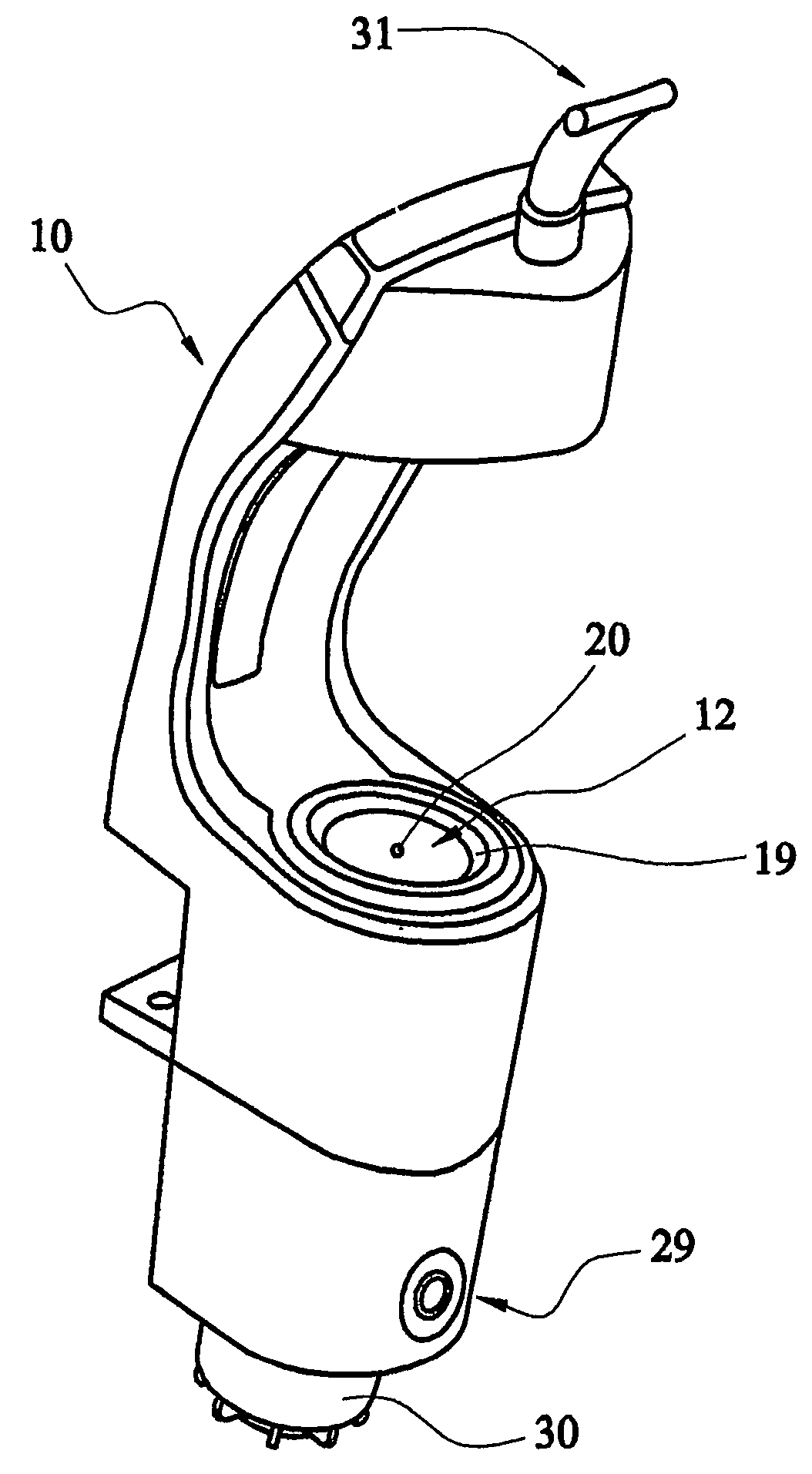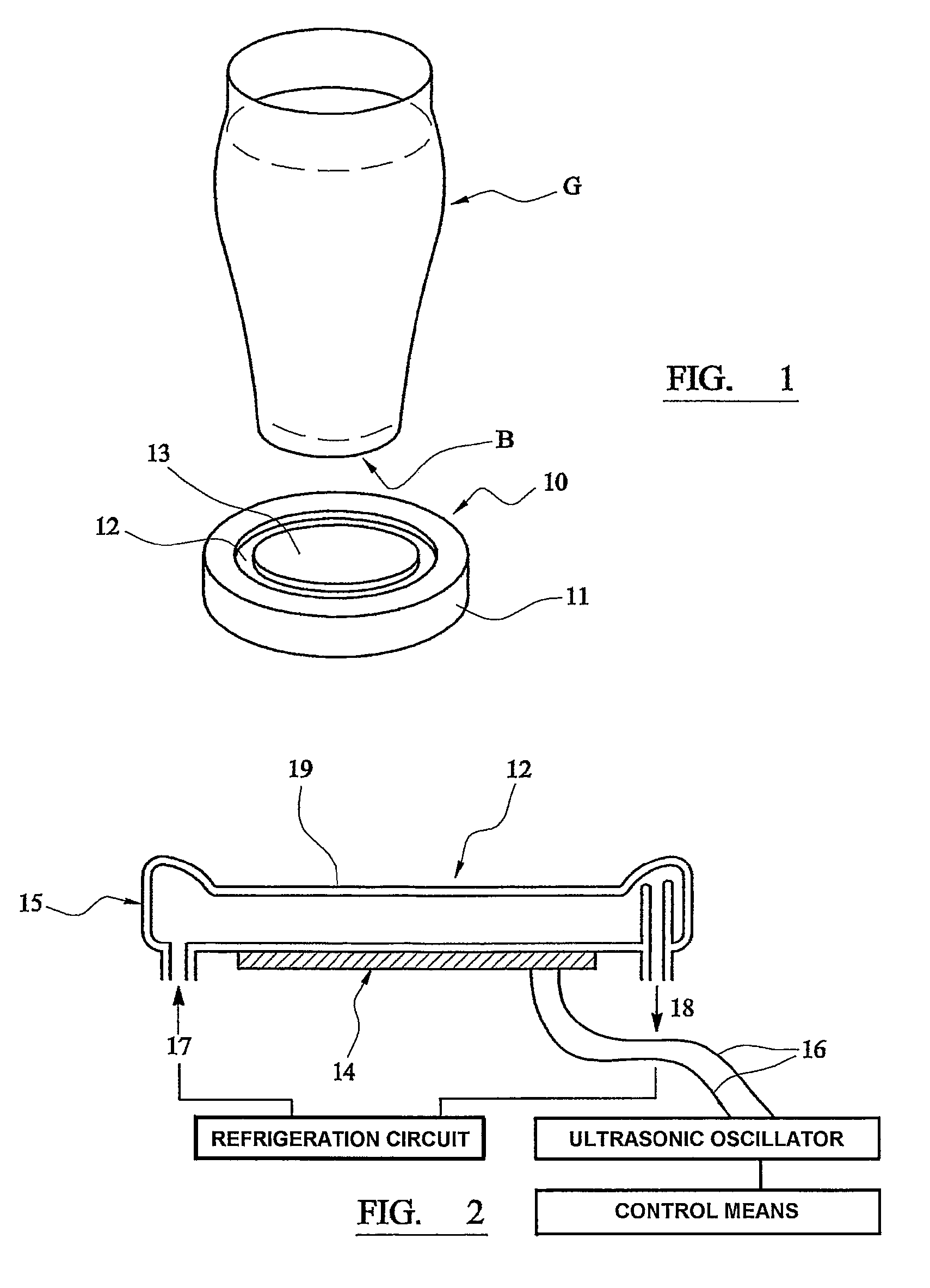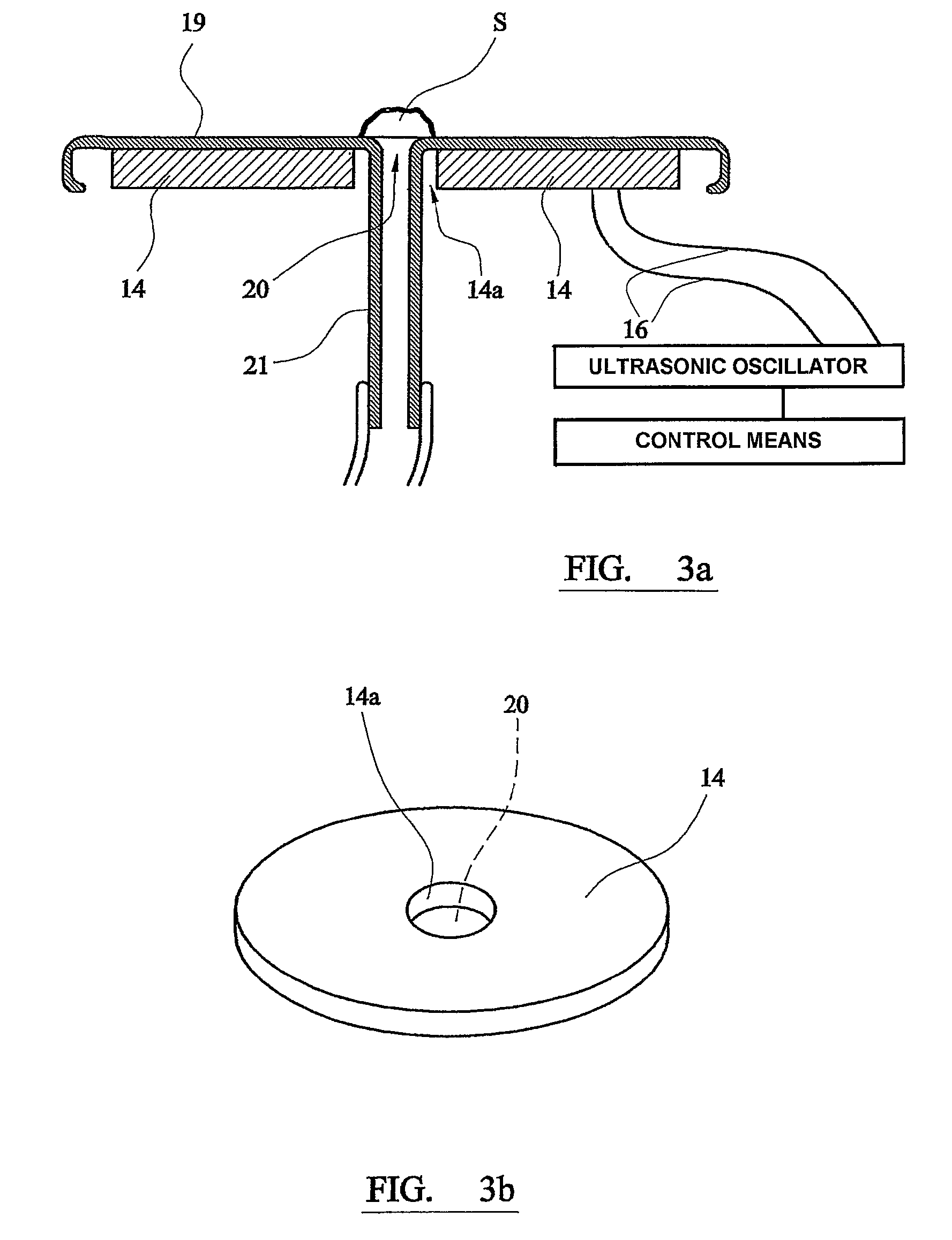Apparatus for forming a head on a beverage
a beverage and head technology, applied in mixers, liquid dispensing, food preservation, etc., can solve the problems of not being able to store beverages in bulk containers, affecting the operation of the bar or similar outlet, and requiring significant space for storing kegs, so as to minimise maintenance operations and be convenient to use.
- Summary
- Abstract
- Description
- Claims
- Application Information
AI Technical Summary
Benefits of technology
Problems solved by technology
Method used
Image
Examples
Embodiment Construction
[0054]Referring firstly to FIG. 1, a standard glass G (e.g. 1 pint) is illustrated to be placed on apparatus, generally denoted 10, for forming a head on the beverage within glass G. The “flat” beverage (i.e. not fizzy and with a low level of gas out of solution) is preferably filled in the glass up to a level just below the rim, such that the remaining area is to be filled with a head. For the intended purpose of the present invention, the vessel delivering the beer is a bottle which will be a standard volume, hence the pourer will not need to measure out a specified amount to ensure room is left for a head. Preferably beer is poured smoothly into a glass so as not to cause premature excitation of gas.
[0055]It will be apparent that the present invention is also useful for forming a head on draught beer straight from a tap, without the need for sparkler type devices as described in the preamble.
[0056]As visible in FIG. 1 the apparatus 10 includes a generally circular tray 11 that in...
PUM
 Login to View More
Login to View More Abstract
Description
Claims
Application Information
 Login to View More
Login to View More - R&D
- Intellectual Property
- Life Sciences
- Materials
- Tech Scout
- Unparalleled Data Quality
- Higher Quality Content
- 60% Fewer Hallucinations
Browse by: Latest US Patents, China's latest patents, Technical Efficacy Thesaurus, Application Domain, Technology Topic, Popular Technical Reports.
© 2025 PatSnap. All rights reserved.Legal|Privacy policy|Modern Slavery Act Transparency Statement|Sitemap|About US| Contact US: help@patsnap.com



